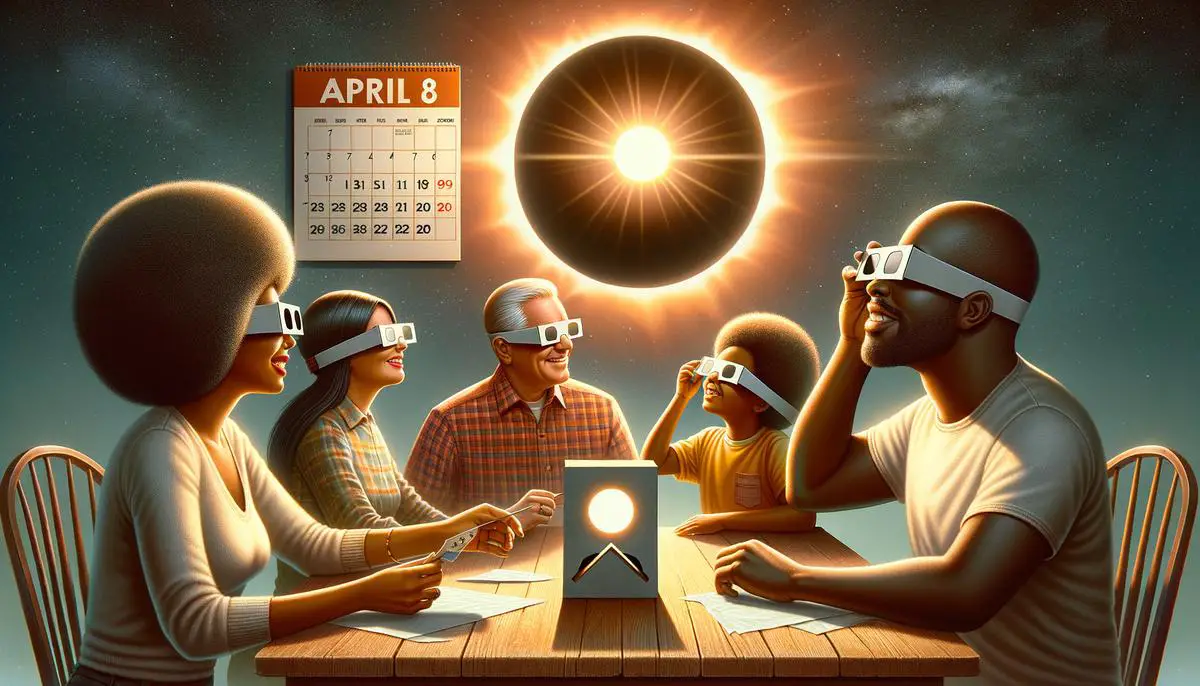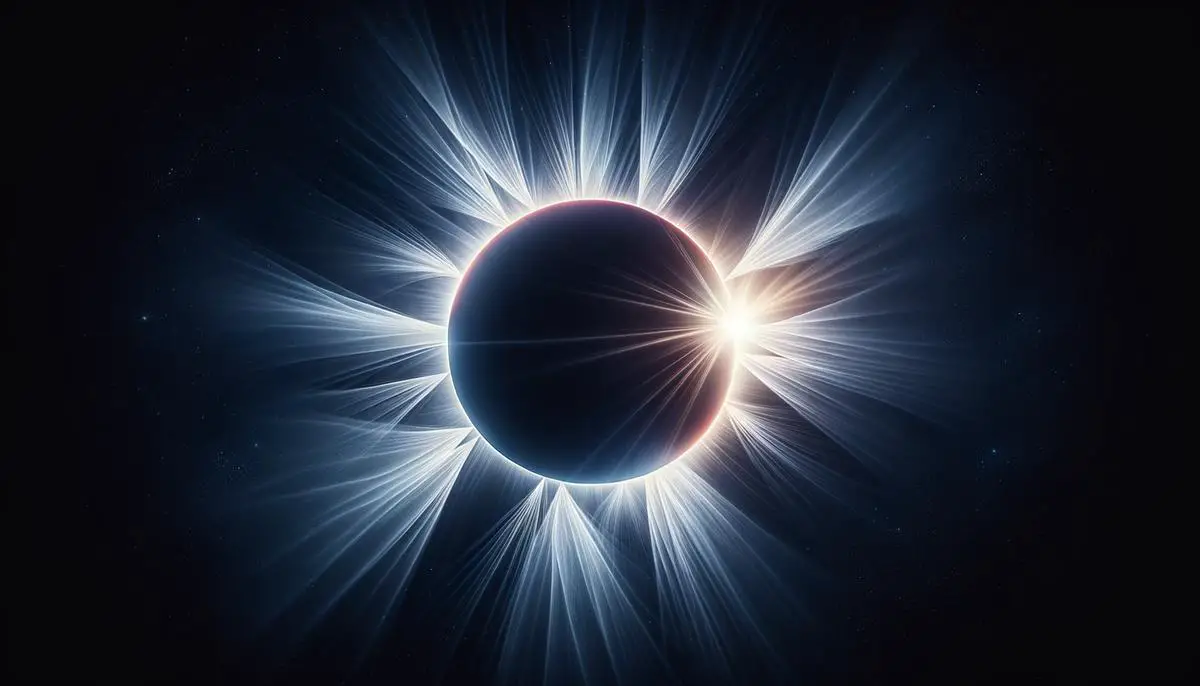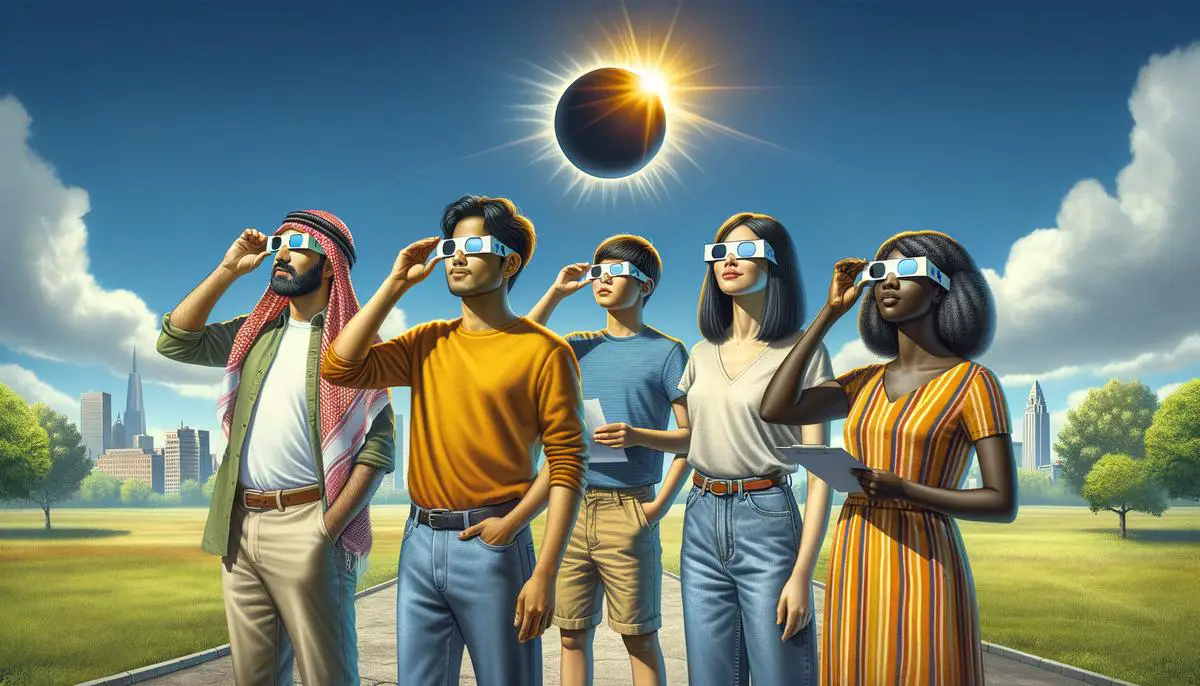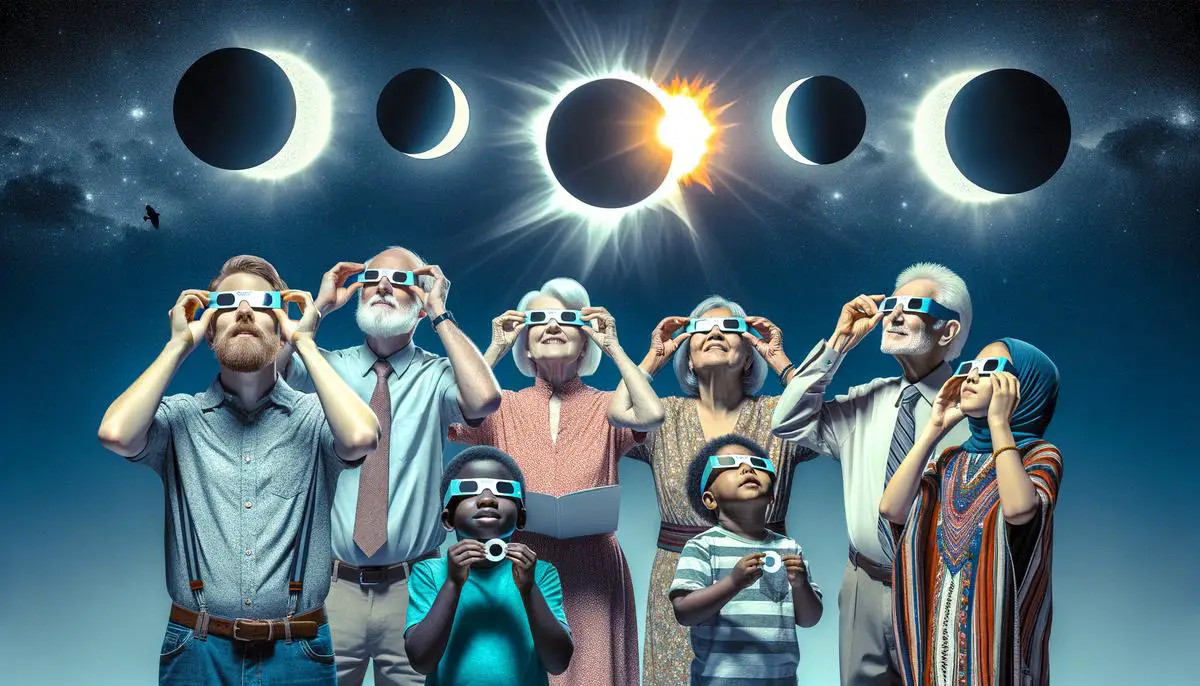The solar eclipse on April 8 is an exciting event that you won't want to miss. However, it's important to view it safely to protect your eyes. This article will provide tips on how to watch the eclipse, including using the right viewing tools like eclipse glasses and pinhole projectors, and how technology can enhance your experience. By following these essential guidelines, you can enjoy this memorable event while keeping your eyes safe.
Understanding Solar Eclipse Viewing Methods
How to Safely View the Solar Eclipse
Use Eclipse Glasses
The safest way to look at the Sun — eclipsed or not — is through special eclipse glasses. They're much darker than regular sunglasses, reducing sunlight to safe levels. Make sure they meet the ISO 12312-2 international standard.1 Don't use scratched or damaged glasses, as they won't protect your eyes effectively.
Try a Pinhole Projector
No eclipse glasses? No problem. You can make a pinhole projector with just a couple of household items. All you need is two pieces of white cardboard. Poke a small hole in one piece, and let sunlight shine through that hole onto the second piece. You'll see the eclipse projected on the second card.
Watch Through a Pinhole Mirror
Reflect the Sun's light onto a distant surface using a mirror, but remember to cover the mirror with paper that has a small hole pierced in it. This technique projects an image of the Sun onto a far-away spot, like a wall, making it safe to observe.
Solar Filters: The Must-Have for Telescopes & Binoculars
Planning to use a telescope or binoculars? Attach a solar filter to the front. Looking through these devices without a proper solar filter can cause severe eye damage instantly.2
Water and Your Safety
Attending near bodies of water? Early April water temperatures are cold enough to pose hypothermia risks. Whether you're on the shore or in a boat, prepare for cold water conditions and prioritize safety.
Technology to the Rescue
Apps and live streams offer a great, safe way to experience the eclipse, no matter where you are. Organizations and space-focused groups often broadcast these celestial events live. You won't have to worry about eye safety or missing out because of cloudy skies.
Remember, never look directly at the Sun without protection outside of the total eclipse phase. Enjoy the eclipse safely!

Predicting Cloud Coverage for Optimal Viewing
Preparing for Cloudy Weather During the Eclipse
Monitoring Weather Forecasts
Staying updated with the latest weather forecasts is key. Starting about a week before the eclipse, check weather apps or news channels regularly. As the day gets closer, forecasts become more accurate. Pay special attention starting April 6 – around this time, meteorologists can make solid predictions about eclipse day weather.
Understanding the Statistics
Weather varies greatly from year to year, so don't rely solely on long-term statistics. While they offer a glimpse into typical weather patterns, they can't promise clear skies on eclipse day itself. Keep in mind: "Climate is what you expect; weather is what you get." This serves as a reminder that while climate data can guide us, weather forecasts give the real-time information needed for decision-making.
Leveraging Modern Technology
Thanks to smartphones and the internet, staying informed has never been easier. Use your phone to check satellite images and weather updates. This tech keeps you informed and can guide you to clearer viewing locations if you need to make a last-minute change.
Mobility is Your Best Bet
Sitting tight in one spot might not be the best strategy if clouds threaten your view. If possible, be ready to move. Having a car ready and knowing the local roads can make all the difference. Several areas within the eclipse path might have clearer skies, and being able to quickly relocate could turn a clouded-out day into a successful viewing experience.
Choosing Your Viewing Spot Carefully
While statistics and forecasts are great, your best bet might just be to pick a spot with typically reliable weather and easy access to alternative locations. Areas with multiple clear viewing options within a reasonable distance provide a safety net should the weather turn on eclipse day.
Staying informed through weather forecasts, being ready to relocate if necessary, and choosing your viewing spot with the weather in mind are all essential steps. With a bit of preparation and flexibility, you'll significantly increase your chances of witnessing this astronomical event, cloud cover notwithstanding.

Safety Precautions and Eclipse Etiquette
Guided Viewing for Solar Eclipse Newcomers
Seek the Shade: Understanding Totality's Brief Safe Gaze
In the alignment of the moon and sun, there's a brief moment – totality – when it's safe to look directly at the eclipse without protection, as the moon fully covers the sun.3 Remember, this exception applies strictly during those few minutes of total eclipse. Before and after, it's essential to protect your eyes.
Guard Your Gaze: Eclipse Glasses Are Essential
Don't skimp on your viewing gear. Standard sunglasses won't cut it — specialized eclipse glasses are a must. These aren't your everyday shades; they're designed to protect your eyes from the sun's powerful rays. Ensure they're certified, undamaged, and worn correctly. If you peek over or under them at the sun, that's not safe.
Crafting Shadows: The Pinhole Projector's Low-Tech Charm
Fancy gadgets aren't necessary to enjoy the celestial show. Enter the pinhole projector, a simple but effective DIY viewer. It's as straightforward as piercing a small hole in a card and letting the sun's image project onto a flat surface. You're watching the eclipse safely through a pin-sized window.
Reflections of the Cosmos: Pinhole Mirrors
Just like the pinhole projector, but with a twist — use a mirror. Small, handheld, and simple, a mirror can project the eclipse onto a plain surface. Remember the setup: the smaller the reflective area (try covering most of it), the crisper the image. And again, looking directly at the sun through this setup is off-limits.
Telescopic Tales: A Warning
For those drawn to telescopes or binoculars for a closer look, heed this vital instruction: only proceed if you have a solar filter specially designed for your equipment. Attaching it firmly to the device's front end, not the eyepiece, is critical. Ignoring this guideline risks serious eye injury, as the sun's intensified gaze can be harmful.
Stay Wise on the Water
Considering a nautical viewpoint? While Lake Erie's waves might tempt, remember: early April waters are cold. The risk of hypothermia is real if you find yourself unexpectedly in the water. Safety vests are essential, and staying near the shore is recommended.
Leverage Your Tech Toolbox
Yes, your smartphone can be more than just a camera for the day. Leading up to April 8, use it to check weather updates and even last-minute moves to dodge clouds. Apps and websites can provide valuable real-time information, making your quest for clear skies a bit easier.
By following these guidelines – from protecting your sight with eclipse glasses to using low-tech viewers and not overlooking water safety – your solar eclipse experience promises to be as safe as it is memorable. Remember, preparation is key to a successful viewing. Here's to clear skies on April 8!

- International Organization for Standardization. ISO 12312-2:2015. Eye and face protection — Sunglasses and related eyewear — Part 2: Filters for direct observation of the sun. 2015.
- Chou BR. Eye safety during solar eclipses. NASA. Published January 12, 2018.
- Littmann M, Espenak F, Willcox K. Totality: Eclipses of the Sun. 3rd ed. New York, NY: Oxford University Press; 2008.
![]()
